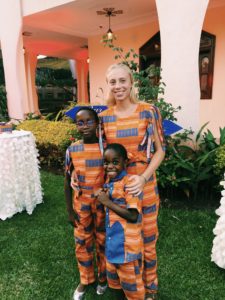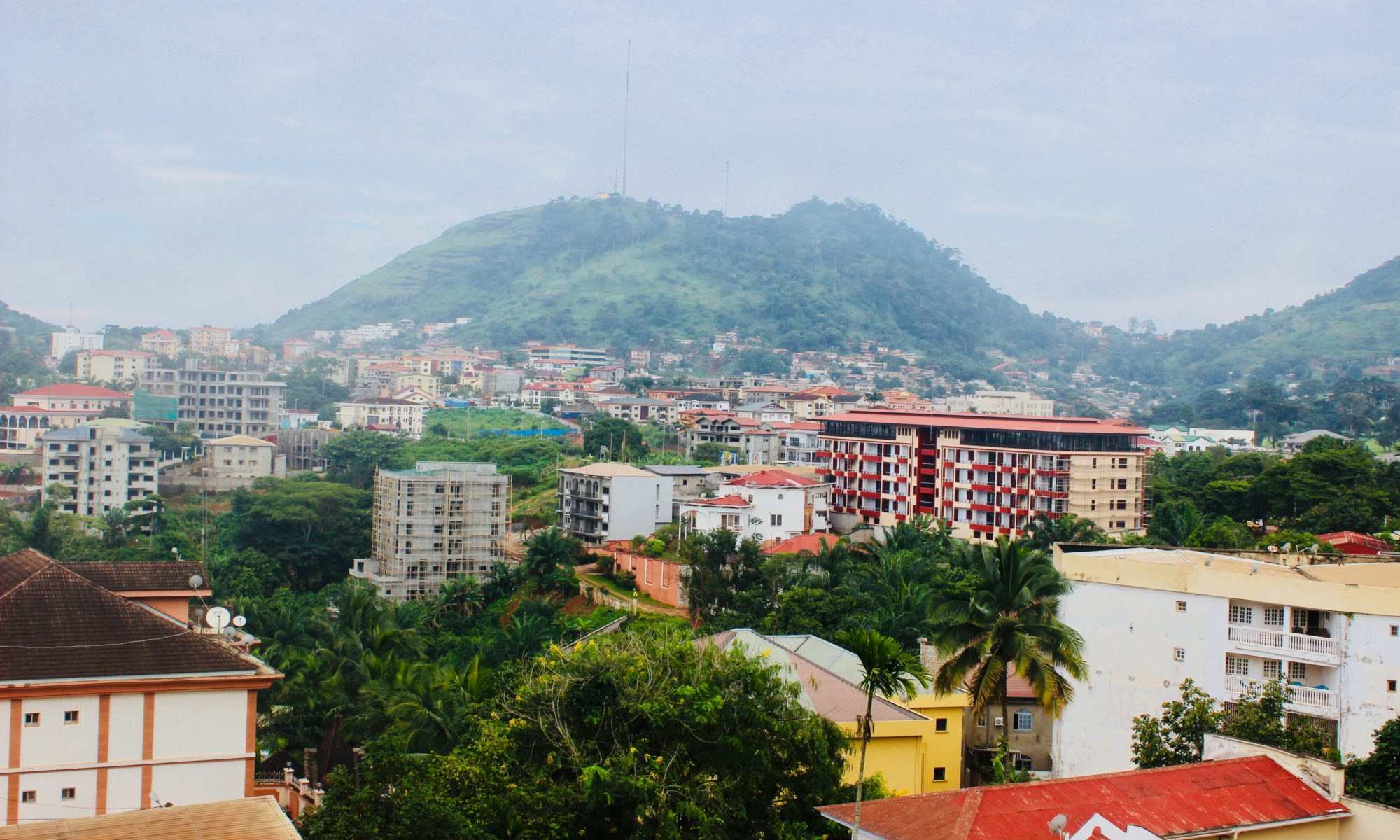The night before my flight back to Boston, we attended a traditional Cameroonian marriage ceremony and party. We had been invited by M. Boniface who is a very good friend of Professor Ngabeu’s. We had spent some time with M. Boniface (who is incredibly welcoming and generous), so we were very excited to be able to attend his daughter’s traditional wedding. They will have another less traditional wedding after Christmas. We had been fitted for our wedding attire months ago because a seamstress makes the clothing. Here, everyone attending the wedding wears the same cloth that the family picks out, and then each guest can choose what style they want to wear. I think it saves a lot of stress over what to wear to a wedding! Serena Ngabeu and I were matching.

So Friday evening we headed to Bastos which is where M. Boniface lives. We were lucky enough to be attending the actual ceremony, as well as the party afterwards. Neither Arjun nor I had ever seen a Cameroonian marriage before (although we had learned about it in class), so we were very excited. To briefly outline what went on during the ceremony:
The welcoming family (in our case, the bride’s family) sits on one side of a room, leaving space on the other side for the groom’s family who haven’t yet arrived. Once the groom’s family gets there, they sit down and are welcomed by the bride’s family who asks them why they have come. Now, everyone is aware at this point why they have come, but it is all part of the traditional ceremony. The groom’s family then says they have something missing from their family and they believe they can find it at the bride’s house. The bride’s family then plays along by presenting bottled drinks, food, etc. asking if this is what the groom’s family has been looking for. The groom is seated at the back, and the bride isn’t present at all yet. The groom’s family continues to say that nothing they have been presented with is what they came for. They are invited to look into the kitchen to see if they can find what they want, but they still can’t. Then, a group of women from the bride’s family find someone in another room and drape them in a long veil so they are difficult to recognize. The groom’s family finally says it is a woman they have come for and the bride’s family have to be sure that the groom’s family can recognize the woman they want. If not, it can be a sign of infidelity. The women begin to come in with the veiled figure (not the bride), pretending to be a car that is driving her. The act out running out of gas, so the groom’s family has to “pay for the gas” or else they can’t see the figure. The groom’s family has to continue to give money for a mechanic, then a helicopter and finally a private jet to get the figure to the groom’s family safely. Without looking beneath the veil, members of the groom’s family (not the groom himself, although I saw him giving some hints!) have to decide whether or not it is the bride. At this particular ceremony, the groom’s family failed twice (once finding a man dressed up as a woman under the veil which is worse case scenario), so they had to continue to give money. This is called “la dot” or the dowry.

Finally a figure is brought out a third time and it is the real bride. So everyone gets up and dances with her saying something along the lines of “Jolie, je ne peux pas la laisser” which means “Pretty, I can not leave it” while placing money on her head. Later, the money will be collected and counted to see if it is sufficient and accepted by the bride’s family. The same is then done for the groom, who appears from behind the rest of his family. This is followed by traditional rites like the fathers and grandfathers giving the couple advice and sharing mixed drinks (representative of the two people now joined together who can never bee separated) and eating Kola nuts (representative of the eternal nature of marriage- the father’s can only eat the Kola nuts once as divorce isn’t accepted).
After the ceremony, the couple are traditionally married! We then eat a big dinner (at midnight!) and there are lots of performances from singers, DJs, comedians and poets before the dance floor opens up and everyone dances until dawn. We ended up leaving at 5am! All in all, it was an amazing, very fun night where I feel like I also learned a lot about the Cameroonian culture.
I can’t believe tonight I will be getting on a plane and leaving Cameroon! It has been an absolutely incredible 4 months here and I am just as sad to leave as I am excited to see my family and friends back home. I know I will be back soon (with many a family member in tow), but it is definitely hard to say goodbye to the wonderful people I have met here. I have had some unforgettable experiences and I am so grateful to have had the opportunity to live in Cameroon.
Je dis alors, à bientôt, Yaoundé!



